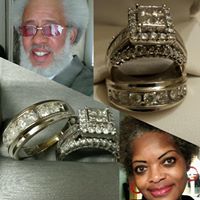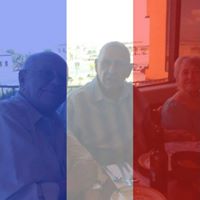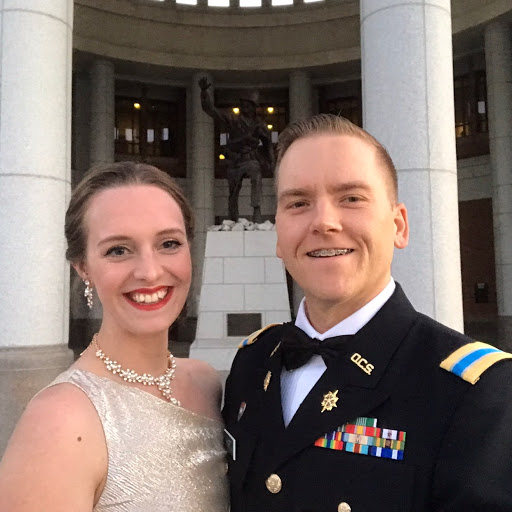Richard J Hurt
age ~47
from Knoxville, TN
- Also known as:
-
- Jason J Hurt
- Phone and address:
-
7545 Holly Crest Ln, Knoxville, TN 37938
8659380360
Richard Hurt Phones & Addresses
- 7545 Holly Crest Ln, Knoxville, TN 37938 • 8659380360
- Strawberry Plains, TN
- New Market, TN
Wikipedia References

Richard Hurt
About:
Died:
1616
Work:
Position:
English MP
Skills & Activities:
Ascribed status:
Person of the Stuart period
Us Patents
-
Dna Sequence Detection By Limited Primer Extension
view source -
US Patent:7378242, May 27, 2008
-
Filed:Mar 17, 2005
-
Appl. No.:11/081518
-
Inventors:Richard A. Hurt - Oak Ridge TN, US
-
Assignee:Atom Sciences, Inc. - Oak Ridge TN
-
International Classification:C12Q 1/68
C12P 19/34 -
US Classification:435 6, 435 911
-
Abstract:A novel limited primer extension reaction improves detection sensitivity and specificity in a variety of hybridization platforms. In the invention, a sequence of target DNA that lacks one of the four types of nucleic acid bases for a span of eight or more adjacent nucleotide positions is selected for use. This sequence is referred to as the extension complement sequence, or ECS. A primer with a sequence that is complementary to the target sequence that is immediately downstream (to the 3′ side) of this ECS is used to initiate an extension reaction. Extension occurs using a DNA polymerase and standard deoxynucleoside triphosphates for three of the four types of nucleic acid bases. The fourth base, which is complementary to the base missing in the ECS, is either absent or present only in the form of a dideoxynucleoside triphosphate, which does not support further extension. In either case, the extension reaction does not proceed past the first occurrence in the template of the base that is missing in the ECS. This results in a primer extension product with fixed length determined by the length of the ECS.
-
Polymeric Nucleic Acid Hybridization Probes
view source -
US Patent:20050112636, May 26, 2005
-
Filed:Sep 23, 2004
-
Appl. No.:10/947310
-
Inventors:Richard Hurt - Oak Ridge TN, US
Tom Whitaker - Oak Ridge TN, US -
Assignee:ATOM SCIENCES - Oak Ridge TN
-
International Classification:C12Q001/68
C07H021/04 -
US Classification:435006000, 536024300
-
Abstract:A novel polymeric nucleic acid probe improves detection sensitivity and specificity in a variety of hybridization platforms. The probe is made up of multiple short nucleic acid sequences (referred to as monomers) attached together to form a long polymeric probe for use in hybridization applications. For applications requiring immobilization of the probes to a surface, the polymeric probes are similar to long DNA probes in that they can be immobilized to a variety of surfaces without need for a chemical modification to the end of the probe. Because target nucleic acids hybridize to the relatively short monomers in the polymeric probe, the polymeric probes are more specific than long DNA probes. In addition, polymeric probes also improve the signal-to-background ratio by increasing the number of accessible monomer oligonucleotide probes immobilized per unit area on a surface.
-
Extraction Of High-Purity Dna And Rna
view source -
US Patent:20060199203, Sep 7, 2006
-
Filed:Feb 17, 2006
-
Appl. No.:11/356152
-
Inventors:Richard Hurt - Oak Ridge TN, US
-
Assignee:ATOM SCIENCES - Oak Ridge TN
-
International Classification:C12Q 1/68
C12N 1/08 -
US Classification:435006000, 435270000
-
Abstract:The present invention is directed to a method of extracting nucleic acids from samples containing prokaryotic cells and/or eukaryotic cells by (a) lysing the cells under conditions that minimize RNA expression or enzymatic degradation of RNA; (b) dispersing and diluting the lysed cells; (c) mixing the dispersed and diluted lysed cells with a buffered solution containing cationic and anionic detergents; (d) separating non-nucleic acid contaminants from the nucleic acids by mixing with an organic extraction solvent to generate an emulsion that separates into an organic phase, an interface containing the contaminants and an aqueous phase containing the nucleic acids; (e) separating the phases, and retaining the aqueous phase; and (f) precipitating the nucleic acids in the aqueous phase.
Resumes

Staff Scientist
view sourceLocation:
Knoxville, TN
Industry:
Biotechnology
Work:
490 Biotech
Staff Scientist
Staff Scientist
Education:
The University of Tennessee - Knoxville

Richard Hurt
view sourceLocation:
Knoxville, TN
Industry:
Research
Work:
Oak Ridge National Laboratory 2010 - 2013
Research Associate
Atom Sciences Oct 2001 - Jun 2010
Senior Scientist
Atom Sciences Inc 2001 - 2010
Senior Principal Scientist
Indian River Mariculture 1984 - 1988
Bivalve Hatchery R and D Specialist
Research Associate
Atom Sciences Oct 2001 - Jun 2010
Senior Scientist
Atom Sciences Inc 2001 - 2010
Senior Principal Scientist
Indian River Mariculture 1984 - 1988
Bivalve Hatchery R and D Specialist
Education:
University of Tennessee, Knoxville 2001 - 2007
Doctorates, Doctor of Philosophy, Biochemistry, Microbiology University of Tennessee, Knoxville 1992 - 1997
Doctorates, Doctor of Philosophy, Genetics, Philosophy University of Tennessee, Knoxville
Bachelors, Bachelor of Arts, Biochemistry
Doctorates, Doctor of Philosophy, Biochemistry, Microbiology University of Tennessee, Knoxville 1992 - 1997
Doctorates, Doctor of Philosophy, Genetics, Philosophy University of Tennessee, Knoxville
Bachelors, Bachelor of Arts, Biochemistry
Skills:
Molecular Genetics
Molecular Microbiology
Molecular and Cellular Biology
Molecular Biotechnology
Molecular Microbiology
Molecular and Cellular Biology
Molecular Biotechnology

Richard Hurt
view source
Richard Hurt
view source
Richard Hurt
view source
Richard Hurt Jr.
view source
Richard Hurt
view source
Richard Hurt
view source
Richard Ryan Hurt
view source
Richard C Hurt
view source
Richard Hurt
view source
Richard E Hurt
view source
Richard T Hurt
view sourceNews

Biggest container ship to visit US enters San Francisco Bay
view source- Livingstone and two other pilots, John Carlier and David McCloy, went aboard to familiarize themselves with megaships like this and to assist the principal pilot, Capt. Richard Hurt, who was in charge of guiding the ship in from the ocean to its dock at the Oakland Outer Harbor.
- Date: Dec 31, 2015
- Category: Business
- Source: Google

Some Good News for the E-Cig Industry: Vaping Can Help Smokers Quit
view source- While vaping is widely believed to be safer than inhaling tobacco smoke, its not safer than just breathing clean air, as Dr. Richard Hurt, former director of the Mayo Clinics Nicotine Dependence Center, said in a recent interview.Other research in the U.S. suggests that smokers perception that
- Date: May 21, 2014
- Category: Health
- Source: Google

Do E-Cigarettes Help Smokers Quit? It Depends on Whom You Ask
view source- quit smoking say confusion about vapings benefits for smokers who want to stopmakes their job harder. We dont have any real evidence that they help people stop smoking, saysDr. Richard Hurt, who ran the Nicotine Dependence Center at the Mayo Clinic in Rochester, Minn., for 26 years. While he
- Date: May 05, 2014
- Category: Health
- Source: Google

CVS ban on cigarettes could sharply cut smoking rates
view source- Canada has reduced cigarette sales simply by requiring retailers to store them under the counter, where they're invisible to customers, says Richard Hurt, director of Mayo Clinic's Nicotine Dependence Center. He notes that tobacco companies pay convenience stores a lot of money to position cigarette
- Date: Feb 05, 2014
- Category: Health
- Source: Google

E-cigarettes take social scene by storm; pose headaches for regulators
view source- Dr. Richard Hurt, who runs the nicotine dependence center at the Mayo Clinic in Rochester, Minn., suggests the expansion of the e-cigarette industry and market is turning back the clock on tobacco control.
- Date: Dec 23, 2013
- Category: Health
- Source: Google

Anti-smoking laws prevent heart attacks, research suggests
view source- "There have been lingering doubts among some people about whether or not this was a real finding," Dr. Richard Hurt, a professor of medicine at the Mayo Clinic in Rochester, Minn., told Reuters. "We think we have produced the most definitive results that anyone can produce related to smoke-free laws
- Date: Oct 30, 2012
- Category: Health
- Source: Google

After Smoking Is Banned, Heart Attacks Drop
view source- "We should now accept this as fact," says Richard Hurt, a professor of medicine at the Mayo Clinic who led one of the studies. Tobacco industry arguments that secondhand smoke isn't a major risk factor for heart disease, he says, are "just nonsense," because the only risk factor that changed in thos
- Date: Oct 29, 2012
- Category: Health
- Source: Google

1 in 4 High School Seniors Smokes
view source- "Unfortunately, most teenagers don't realize that just a few cigarettes here and there can lead to addiction," said Dr. Richard Hurt, director of the Mayo Clinic's Nicotine Dependence Center in Rochester, Minn. "All it takes is a bit of experimenting, and that's what teens do."
- Date: Mar 08, 2012
- Source: Google
Classmates

Richard Hurt
view sourceSchools:
Hiseville High School Hiseville KY 1965-1969
Community:
Connie Pursley

Richard Hurt
view sourceSchools:
Dykes High School Atlanta GA 1964-1968
Community:
Paul Ford, Rolf Rahmberg

Richard Hurt
view sourceSchools:
Arcadia Valley High School Ironton MO 1988-1992
Community:
Lonnie Brooks, Marvin Watson, Roy Whited, Robert Fritschle, Paul Mcintyre

RICHARD HURT | Central Ju...
view source
Richard Hurt, Elkin High ...
view source
Richard Hurt, Murray High...
view source
Central Junior High Schoo...
view sourceGraduates:
Beth Slinkard (1961-1965),
Darlene Parks (1964-1968),
RICHARD HURT (1982-1986),
jana bailey (1984-1988),
will woods (1979-1983)
Darlene Parks (1964-1968),
RICHARD HURT (1982-1986),
jana bailey (1984-1988),
will woods (1979-1983)

Hiseville High School, Hi...
view sourceGraduates:
Richard Hurt (1965-1969),
Kathy Firkins (1968-1972),
Sherry Dial (1970-1974),
Lois Shepard (1961-1965),
Jean Garrison (1955-1959),
Keith Mills (1994-1998)
Kathy Firkins (1968-1972),
Sherry Dial (1970-1974),
Lois Shepard (1961-1965),
Jean Garrison (1955-1959),
Keith Mills (1994-1998)
Myspace
Youtube
Googleplus

Richard Hurt
Tagline:
Collector of classic cars

Richard Hurt

Richard Hurt

Richard Hurt

Richard Hurt

Richard Hurt

Richard Hurt

Richard Hurt
Flickr
Get Report for Richard J Hurt from Knoxville, TN, age ~47



















